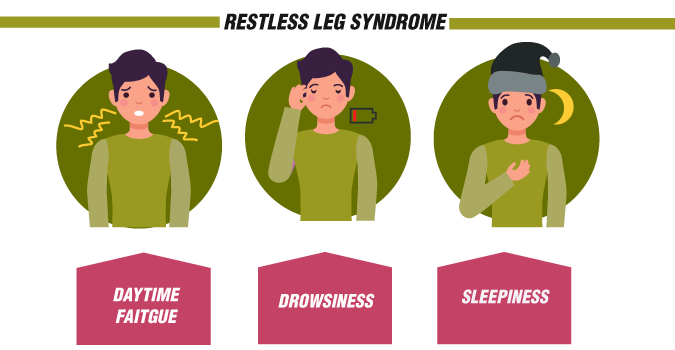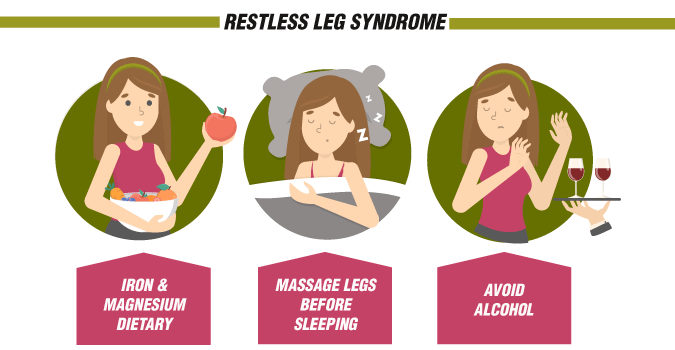Restless Leg Syndrome And Cannabis
Published :
May 20, 2019
Categories :
Medical cannabis

Restless leg syndrome (RLS) is a condition that significantly impacts an individual's quality of life. Recent research indicates that medical marijuana is capable of potentially treating many of the condition's symptoms, as well as improving a patient's overall quality of sleep.
Restless leg syndrome (RLS) is a neurological disorder characterised by an irresistible urge to move one’s legs. Research indicates that the condition is much more common than most people think, affecting between 4–29% of the North American and Western European populations.
Currently, no cure exists for this disorder. However, through lifestyle changes and the use of medication, symptoms can be effectively managed. While most RLS symptoms can be mitigated through the use of prescription medication, medical marijuana is also used by some as an effective treatment option. Clinical research shows that medical marijuana is capable of alleviating many of the daytime symptoms of RLS, as well as improving patient quality of sleep.
WHAT IS RESTLESS LEG SYNDROME?
Restless leg syndrome, otherwise known as Willis-Ekbom disease and Wittmaack-Ekbom syndrome, is a neurological condition that can develop at any age. Symptoms of the condition tend to worsen at night, making sleep difficult and thus sustaining a significant impact on quality of life.
Most people experience RLS in the form of itching or tingling throughout their legs. More intense episodes have been described as a “crawling” sensation. As a result, many patients report a general sense of restlessness that can develop into involuntary movements like twitching or jolting. Given this restlessness and the sleeping difficulties that accompany the condition, many RLS patients report daytime fatigue, drowsiness, and sleepiness.

HOW RESTLESS LEG SYNDROME IMPACTS QUALITY OF LIFE
Because RLS tends to manifest at night, it can seriously impact an individual’s ability to sleep. This is compounded by the fact that many people experience RLS symptoms when relaxing, lying down, or sitting. RLS patients tend to have difficulty falling asleep in the evening and staying asleep throughout the night. This can adversely affect their ability to function throughout the following day, as well as their overall physical and psychological well-being.
In addition to making it harder to sleep, RLS can also make it harder to relax. Many people find that they need to get up and move around in order to soothe their symptoms. As such, some patients report that RLS spikes their stress level significantly.
In addition to the urge to move, patients also struggle to sit calmly. This can make it difficult to participate in a large number of activities like reading, watching movies, attending class, or enjoying a meal. Many patients ultimately find that their condition has a negative impact on their social life and their ability to enjoy activities with other people.
Lastly, the lifestyle changes that may be required to manage RLS can also affect an individual’s quality of life. Being forced to avoid triggers such as alcohol, tobacco, and caffeine can seriously impact an individual's ability to be productive and alert—two things the modern Western world demands to a large degree.
HOW IS RESTLESS LEG SYNDROME TREATED?
Restless leg syndrome can be treated in numerous ways, depending on the severity of symptoms.
The simplest way to treat RLS is by eliminating or avoiding triggers that may provoke symptoms. Staying away from certain foods or substances may help to calm the condition. For instance, some cases of RLS have been directly linked to iron deficiency. Changing your diet to include more iron and magnesium could therefore improve your condition. Additionally, many people find it helpful to avoid substances such as caffeine, alcohol, and nicotine.
Symptoms can also be improved through physical therapy. Stretching, massaging, or stimulating (electric or vibrational) the affected areas before bedtime has been shown to lead to better sleep.
Restless leg syndrome has also been linked to several other underlying conditions. Medical conditions such as diabetes, kidney disease, thyroid diseases, Parkinson’s disease, and nutritional deficiencies have all been known to contribute to RLS.
RLS can also be treated through the use of medication. Medication is typically only prescribed in severe cases where symptoms appear several nights per week. Although, some patients may still be prescribed medication for the treatment of occasional symptoms. The most commonly prescribed forms of medication include dopamine agonists, dopaminergic agents, benzodiazepines, anticonvulsants, and opiates.

CAN CANNABIS HELP RESTLESS LEG SYNDROME?
Medical marijuana experts believe that cannabis has the potential to effectively treat RLS. Clinical research shows that marijuana not only improves daytime symptoms, but also prolongs and improves nighttime sleep.
A 2017 study found that the inhalation of marijuana had a positive effect on RLS symptoms. Five out of six participants reported their symptoms to be in full remission following treatment with marijuana. Meanwhile, the remaining patient reported significant improvement after consuming only CBD. All subjects reported improvements in sleep following the conclusion of treatment.
An earlier study from 2007 found similar results. Patients treated with sublingual cannabis containing both THC and CBD reported an improvement in symptoms about 40–50% of the time. Once again, the study found that cannabinoids not only worked to alleviate daytime symptoms, but also improved sleep.
Researchers believe that much of marijuana’s success in the treatment of RLS comes from its effects on dopamine. Since RLS is considered to be a neurological condition stemming from an imbalance of dopamine, it is commonly treated with medications that act upon the brain’s ability to produce the neurotransmitter. Similarly, marijuana has also been shown to influence the release of dopamine through its interactions with cell receptors in the body’s endocannabinoid system.
Additionally, research shows that THC and CBD, the two primary cannabinoids found in cannabis, are capable of treating a variety of conditions and symptoms that might worsen RLS. For instance, CBD has been found to have anti-anxiety properties that can lower stress and improve sleep. As such, even if medical cannabis does not directly treat RLS symptoms, it may treat underlying causes that exacerbate symptoms.






































